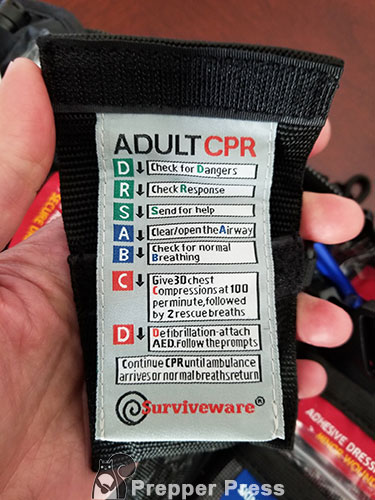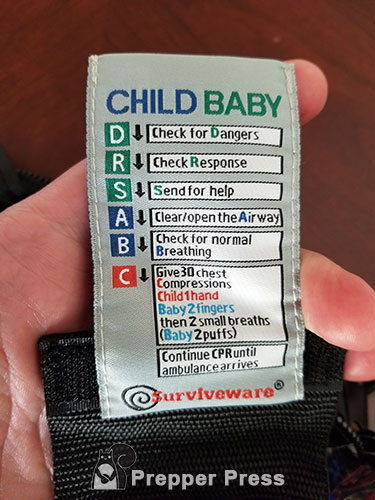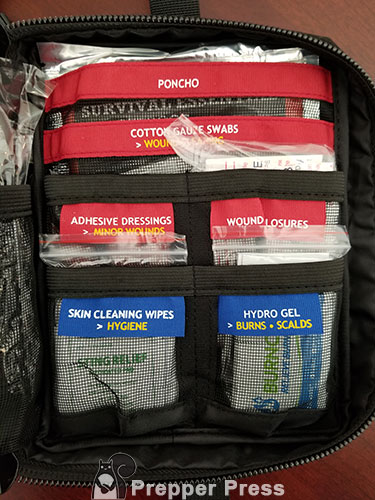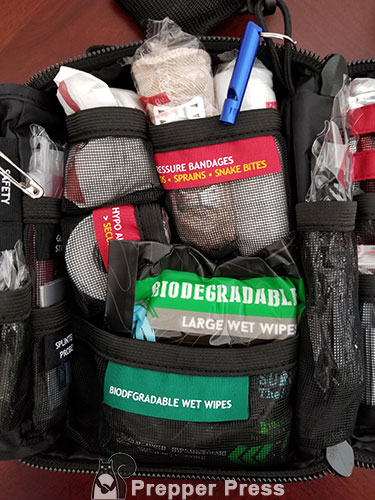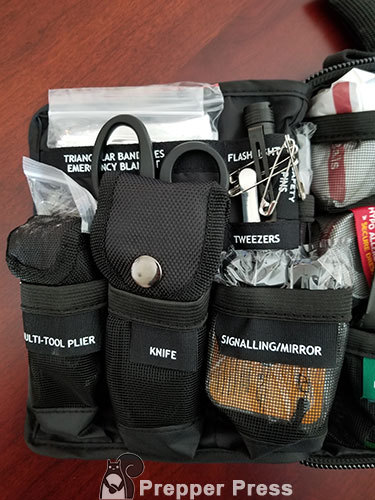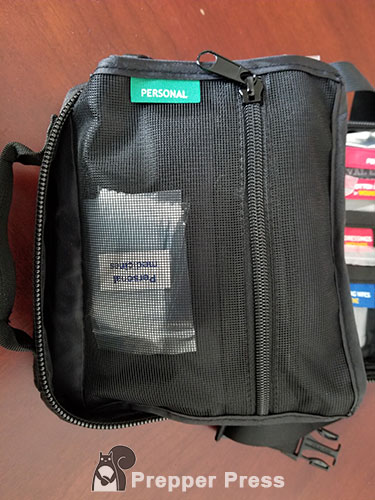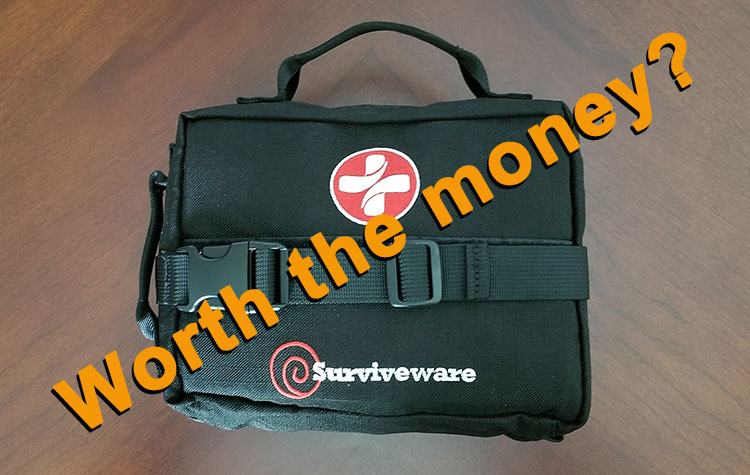
One category of personal preparedness is medical care, and when it comes to buying that gear, you might be wondering – is it better to build or buy a medical kit? You can find many articles about people buying prepper gear through the Dollar Store or Wal-Mart, clipping coupons, etc. There’s a reason for that – prepping is expensive. This leads people wondering how to cover their medical preps without breaking the bank and having money left over for bulk survival food or bulk ammo deals.
It is better to buy a medical kit if you want to save time and not have a bulk quantity of medical products. It is better to build a medical kit yourself if you want higher-end gear and a customized kit. In some cases, it may make sense to do both. I’ll explain.
You may argue otherwise, that it’s always better to build your own kit, but it truly does depend on the individual’s goals, preference, and situation. To describe how I arrived at this conclusion, I’m going to look at one particular over-the-counter, ready-to-go medical bag, the Surviveware First Aid Kit for Outdoor Preparedness. This is the very bag featured in the image above, and – at the time of this writing – has a retail price of $79.95.
There are other pre-built medical kits that you could compare, including:
- EVERLIT 250 Piece Survival First Aid Kit
- Surviveware Large First Aid Kit
- Adventure Medical Kit Sportsman Series
The comparison on whether it makes more sense to build or buy a medical kit can be had on any of these pre-built medical kits. The same principles apply – comparing the cost and contents of the bag with what it would cost to replicate it on your own. We must look beyond just the contents, however. The bag itself has value worth examining.
Comparing the Bag Itself
Few preppers, outdoor enthusiasts, campers, etcetera are going to just dump their medical supplies into a plastic shopping bag. You want all medical products contained in a rugged, convenient, easily identified, grab-and-go bag.
Below you can see the American Diagnostic Corporation (ADC) First Responder bag I bought on Amazon. On the right you can see the Surviveware bag. The ADC bag was purchased as an empty bag and costs roughly $35. The Surviveware bag, as mentioned, came complete at about $80.
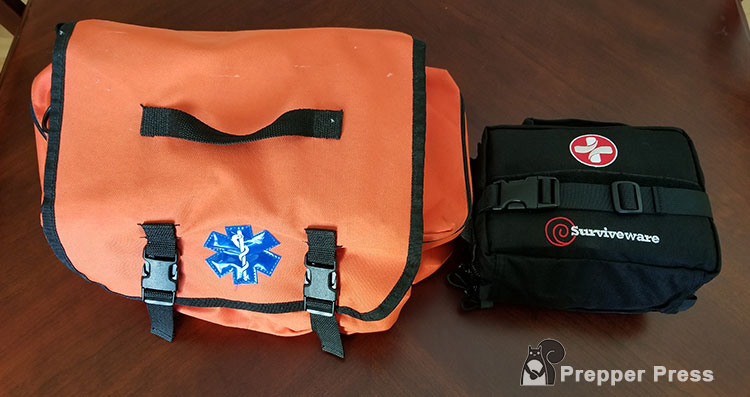
What’s going to immediately jump out to the casual observer is the obvious size difference. You are going to be able to pack significantly more gear inside the orange ADC bag than you will ever fit inside the Surviveware bag. However, if you were to hold these two medical bags in your hand you would notice a very obvious difference in quality.
The ADC bag, while significantly larger, is made of thinner material, does not retain its shape unless it’s full, and lacks any type of attachment features. The Surviveware bag, on the other hand, is made of 600D polyester. The stitching is reinforced. There are MOLLE attachments, metal D rings, and a more rugged snap closure.
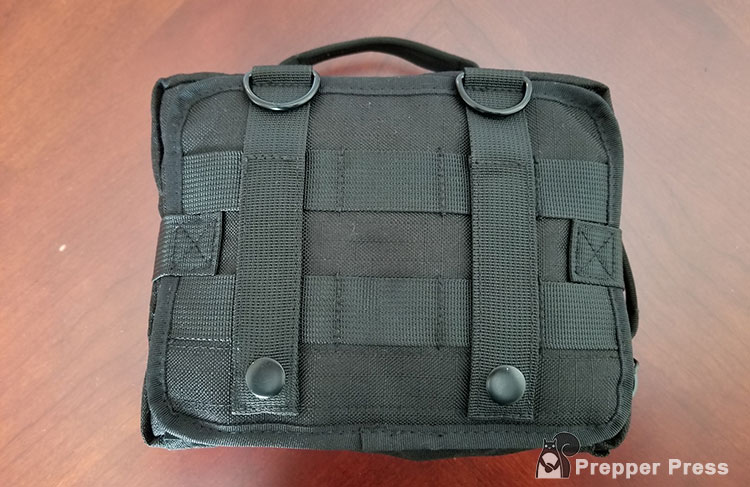
Both bags are designed to be standalone medical bags, but the Surviveware bag, with its many attachment points, can be secured to larger bags via MOLLE attachments. MOLLE is the standard attachment system used by the U.S. military and incorporated into many civilian products including everything from different bug out backpacks to Faraday utility bags.
There are also differences inside the bag. Whereas the ADC bag just has big empty pockets inside, the Surviveware construction carries through to the inside of the bag. As you’ll see in some of the pictures that follow, they have many different pockets for different types of supplies, all clearly labeled.
See these interior pics of the Surviveware bag. Each pocket is conveniently labeled. That’s a plus if you want to find something fast. The downside comes if you want to swap things around, add or change items. You’re then left with inappropriately labeled pouches.
Again, there are many other medical bags, many of them tactical in nature, that you can use to house medical products that you buy separately. Some of those include:
- ASA Techmed First Responder EMS Trauma Bag
- Condor Pack Medical Pouches
- Maxpedition FR-1 Combat Medical Pouch
- S.O. Tech Viper Flat Individual First Aid Pouch
I can’t speak to the interior quality of those bags, but they’re all empty bags ready to house medical gear of your choosing. On that subject…
Comparing Contents
If you’re wondering whether it’s better to build or buy a medical kit, this is where the meat of the comparison exists – in the contents itself. This is why you’re building or building a first aid bag in the first place anyway, to have supplies on hand to dress wounds, heal burns, etc. The content comparison can be summarized as this:
You will get more (and better) supplies buying them individually yourself; however, it will cost much more to do so.
Below is a chart of everything contained within the Surviveware First Aid Kit for Outdoor Preparedness. The links will take you to the lowest-cost comparable item I could find on Amazon.
You can see that the Surviveware bag not only includes various bandages and first aid equipment but also some survival equipment like a folding blade knife, wire saw, whistle, etc.
The contents of the bag you build can be customized to anything you want. That’s a big advantage if you know what to anticipate needing. You can buy exactly those items and have a medical kit built by you for you. There are disadvantages to this, however…
Cost/Quantity Difference
If you purchased everything I linked to through Amazon plus the empty ADC medical bag the total cost as of this writing would be $265.71. That’s compared to $79.99 for the Surviveware bag.
This is not an entirely apples-to-apples comparison, however. For example, you will get one pair nitrile gloves in the Surviveware bag, but if you buy the box of them off Amazon (at $17.17 as of this writing) you will get 100 of them. You will get just a few safety pins in the Surviveware bag, but if you buy them to build your own bag, you will get 90 of them. The same count difference applies to the other products: glow sticks (12 if you buy them), Paracord bracelet (a pair if you buy them), etc.
When weighing the difference, you need to consider whether it is worth spending roughly three times as much to get significantly more medical supplies. This is a personal decision and depends on whether you can use that many supplies, but you also have to consider…
Quality Difference
The quality of the Surviveware products are – to be blunt – not the best. However, you may also need to ask yourself – Do they need to be? Don’t get me wrong, I like a nice product, and I generally believe in the idea that you buy the better product once than something mediocre that you have to buy a second time because it eventually failed. But does a knife in a first aid bag, for example, have to be an EDC carry knife quality?
I don’t think so. An EDC knife (check your state’s knife laws) will be used far more often than a knife in a medical bag. You want a quality knife that you use often. A secondary knife stashed in a medical kit doesn’t have to be high end.
Surviveware folding knife:
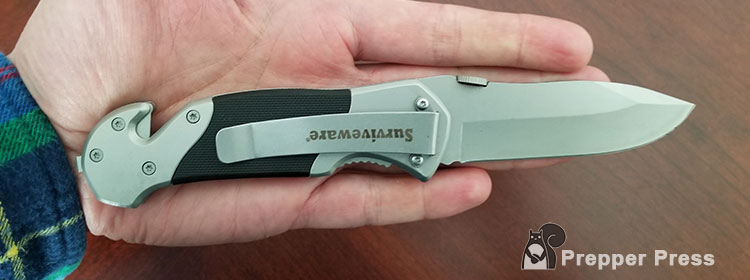
Smith and Wesson folding knife:
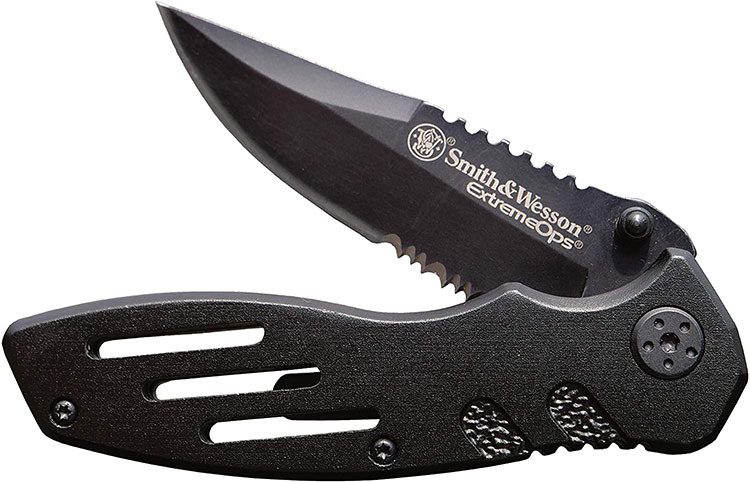
The knife comparison above holds across other items. In the picture below you have the Surviveware chain saw and multi-tool. Both might do the job in a pinch, but I wouldn’t want to have to rely on them, or use them every day.
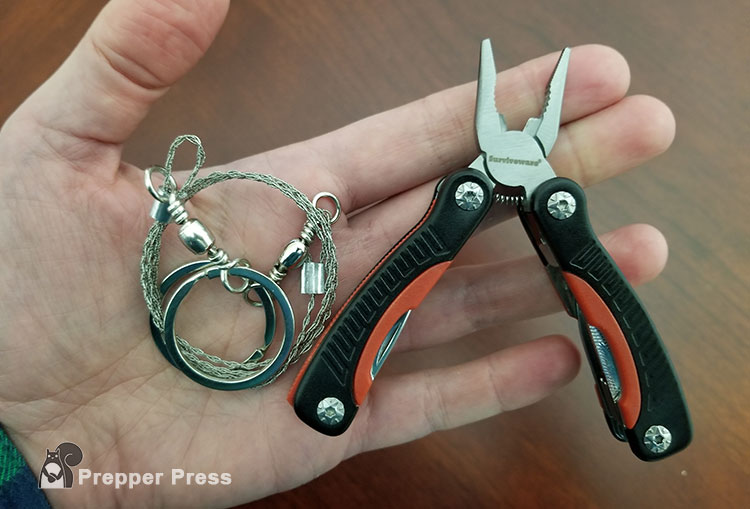
Below is the Surviveware Paracord bracelet. It’s not bad, basic, but you can get better Paracord bracelets for not much money.

Build or Buy a Medical Kit Conclusion
The advantages to buying a medical kit are the shopping convenience and spending less total money on the kit. The advantages to building a kit lie in better quality products and more total products.
I would be remiss if I failed to suggest that, as part of whatever medical kit you build or buy, if you didn’t pick up some medical reference books. There are countless medical/first aid books to choose from, so I’ll leave my suggestions to some of the more niche medical topics. Those include:
- Department of the Army’s First Aid Manual
- Emergency War Surgery
- Tactical Combat Casualty Care and Wound Management
- Veterinary Care and Management of the Military Working Dog (for our K9 friends)
- Where There is No Dentist (a prepper must)
- Where There is No Doctor (a prepper must)
So, where do you stand on medical preps? What steps have you taken to secure your health and wellness after the collapse? Do you think it’s better to build or buy a medical kit? Let us know in the comments section – and prep on!

